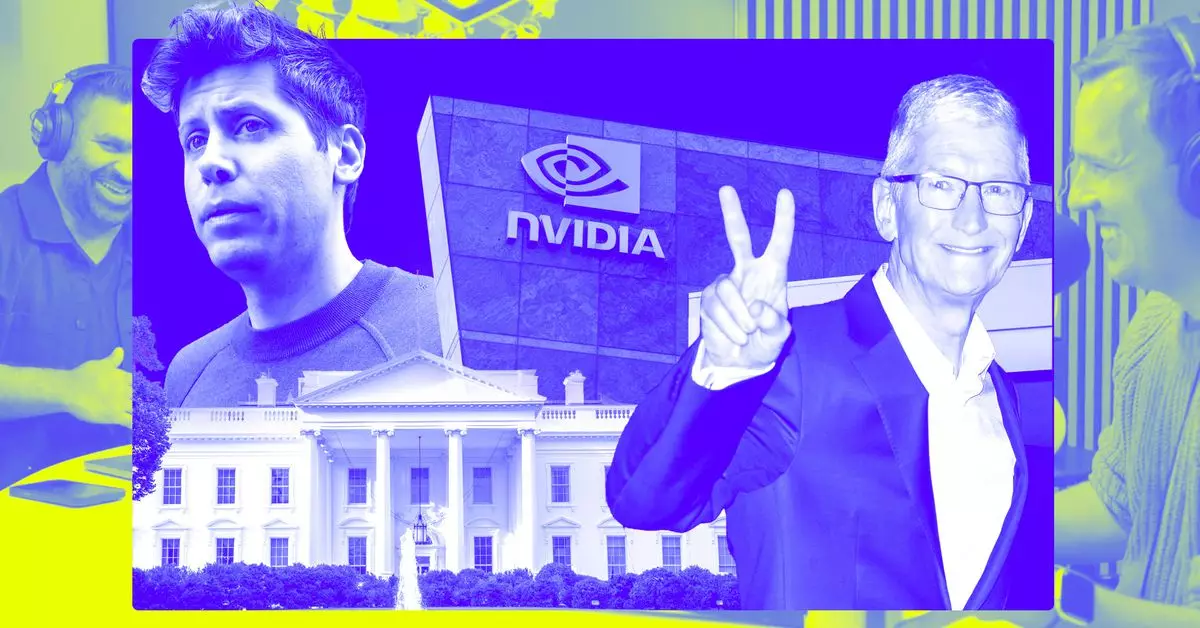In the rapidly evolving landscape of technology, predicting future trends can be as thrilling as it is daunting. With innovations happening at a breakneck pace, it’s essential to sift through the noise and determine what developments are most likely to shape our lives in the near future. This analysis delves into some ambitious predictions regarding the tech industry and evaluates their plausibility based on current trajectories.
One assertion that has emerged from many forecasts is the idea that the heads of major technology companies—often referred to as Big Tech—will remain in their positions. With Tim Cook firmly at the helm of Apple and other industry stalwarts holding their ground, this narrative highlights a significant trend in corporate stability. This stability can be interpreted in several ways: firstly, it signifies that these leaders have successfully navigated the complexities of an industry rife with challenges such as antitrust scrutiny and shifting consumer demands. Secondly, if these CEOs are still in charge, it raises questions about innovation and adaptability. Are these companies becoming complacent, or is their leadership style conducive to sustained growth?
Another salient point in the tech forecast suggests that Nvidia might emerge as the most valuable company in the world. This prediction stems from its significant advancements in artificial intelligence (AI) and machine learning technologies. As businesses increasingly incorporate AI into their operations, the demand for Nvidia’s cutting-edge graphics processing units (GPUs) escalates. However, while Nvidia’s growth appears robust, predicting it will surpass corporate giants like Apple or Microsoft introduces uncertainties, such as market fluctuations and competitive innovations from rivals.
The mention of a potential acquisition of Snap brings into focus the tumultuous landscape of social media. As users gravitate toward platforms that better suit their needs, larger companies often seek to consolidate their power through acquisitions. While analysts may speculate about who might buy Snap, the reality is that the social media market is becoming increasingly fragmented. With new players continually emerging, the viability of established platforms is perpetually in question. Could a major player emerge to change the dynamics, or will Snap maintain its independence amid rising competition?
The ongoing evolution of OpenAI is another critical narrative in the tech realm. The speculation surrounding its shift to a for-profit model and whether it will achieve profitability presents significant implications for the AI industry. If OpenAI finds financial success, it could validate the business models surrounding AI technologies, prompting more investments in the field. However, the ethicality of profit-driven AI raises concerns about prioritizing revenue over responsible AI deployment. Debates on how to balance ethical considerations with technological advancement will inevitably shape future discussions.
The Rise and Fall of Streaming Services
A compelling angle on the streaming landscape is the potential decline of platforms such as Paramount Plus or Peacock. The crowded streaming market has become highly competitive, and with user fatigue setting in, the sustainability of various services is at risk. The rise of Netflix’s live content as a disruptive force further complicates the situation. If traditional cable is indeed fading into obscurity, streaming platforms must innovate relentlessly and find ways to retain subscribers. They may need to explore unique content offerings and user experiences to stand out amidst a saturated market.
Last but not least, gaming trends—specifically the anticipated success of GTA VI—foretell a captivating narrative about consumer engagement and market expectations. With gaming becoming more mainstream and integrated into social interactions, titles like GTA VI hold significant potential to reshape entertainment. However, skepticism remains. Will trends truly reflect the excitement surrounding new releases, or will they prove to be overhyped in a marketplace flush with options?
As we attempt to gaze into the future of technology, we are met with a complex tapestry of possibilities—some grounded in current realities, others steeped in speculation. While discussions surrounding corporate leadership, emergent technologies, and evolving user preferences paint a picture of what’s to come, the unpredictability inherent in the tech realm remains a constant. As consumers, commentators, and industry insiders engage in this dialogue, critical assessments and bold imaginations will be crucial in navigating the forthcoming tide of change.

